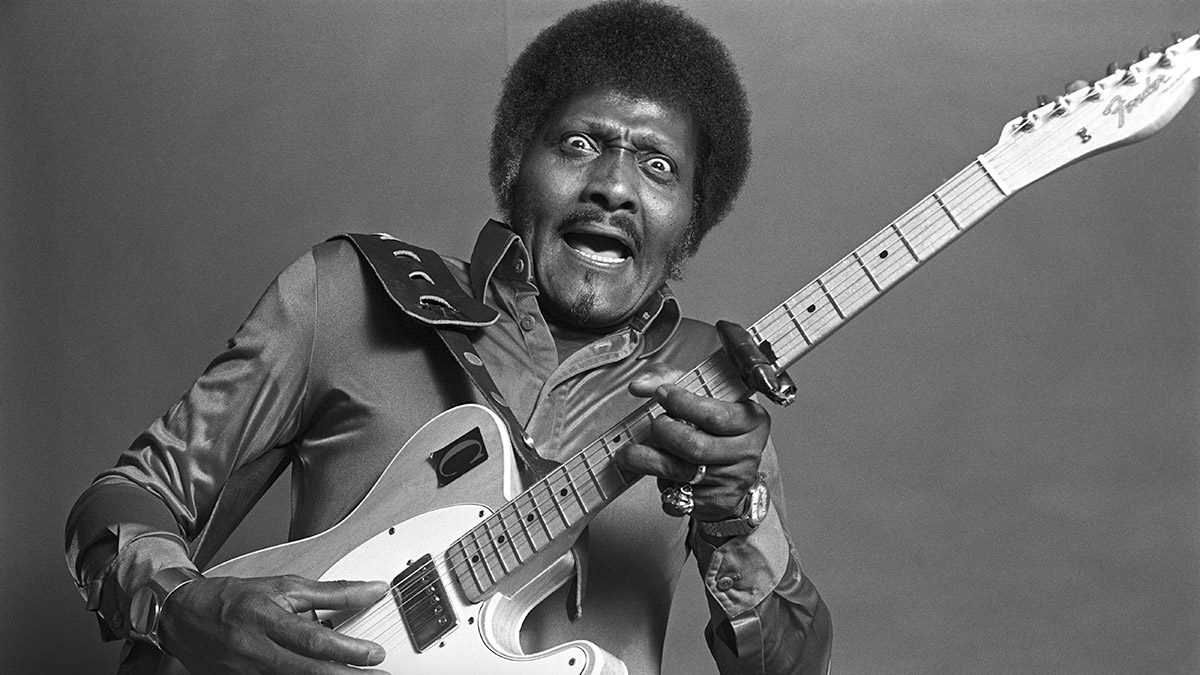Why Albert Collins was the true master of the Fender Telecaster
The Iceman put a whole lot of fire in his playing with wild vibrato and a stinging blues tone

If they call you the Master of the Telecaster, you know you’re doing something right. Also nicknamed ‘The Iceman’, Albert Collins (1932-1993) was a blues legend and natural showman, an impassioned player whose unique, often-copped tones stemmed from his unconventional technique, and his guitar of choice.
Growing up in Texas, Collins (born Albert Drewery) dabbled in jazz piano before his cousin Willie Young showed him some guitar licks, and his blues education began. Taking his cue from John Lee Hooker, Guitar Slim, T-Bone Walker and BB King, Collins found a real talent for the form.
He’d started out on an Epiphone but, on seeing Clarence Gatemouth Brown wailing on a Fender Esquire, promptly switched brands, discovered the Tele and, ultimately, his go-to instrument – a Fender 1966 Custom Telecaster, with ash body, maple fretboard, ashtray bridge, Gibson humbucker at the neck.
Have a listen to some of his signature moments – the uptempo shuffles Frosty and I Ain’t Drunk, the downbeat 12-bar Dyin’ Flu, his Grammy-winning album Showdown, made with fellow greats Robert Cray and Johnny Copeland. He could have only made these fiery, wiry tones with a Telecaster.
Though he could get throaty warmth from the neck pickup, much of Collins’ sound came from his favoured bridge pickup. He’d been taught early on to tune his guitar to a highly idiosyncratic open F minor (low to high: F C F Ab C F), and stuck to that most of his life, using a capo to adjust his guitar’s key for each song.
So if the song was in D, he’d wrap the capo around the 9th fret (not the usual 10th, that F minor tuning having already pushed the guitar up a half-step). He could then play his quirky blues, those retuned fifth and fourth strings offering note choices beyond the more orthodox blues scale shape.

His lines were emotional and tasteful, packed with incredible bends, often wild vibrato, slurs and slides and speedy hammered-on/pulled-off licks. Collins’ right hand was key to his unmistakeable phrasing and tone. He eschewed the precision of a pick and played his Tele with his fingers, his thumb and forefinger doing most of the work.
Get The Pick Newsletter
All the latest guitar news, interviews, lessons, reviews, deals and more, direct to your inbox!
One trademark was his juicy ‘double octave’ move. Say he was capo’d for D: he’d pop the low E string with his thumb for the tonic note and immediately follow that with the D two octaves up – 14th fret of his second string – played with his forefinger. Then he’d shake that sucker for every ounce of feel it had in it.
His preference for pick-hand upstrokes meant the flesh of his fingers tempered the twang of his Tele, usually amped to eye-watering volume by his 100-watt Fender Quad Reverb (bass dialled to zero, everything else cranked).
Sometimes the cable connecting Tele to amp ran to 100 feet long – the story goes he could leave the venue mid-show, go next door to order pizza, and come back without even missing a note. Cool? They didn’t call him The Iceman for nothing...
Grant Moon is the News Editor for Prog magazine and has been a contributor to the magazine since its launch in 2009. A music journalist for over 20 years, Grant writes regularly for titles including Classic Rock and Total Guitar, and his CV also includes stints as a radio producer/presenter and podcast host. His first book, Big Big Train - Between The Lines, is out now through Kingmaker Publishing.
“There’d been three-minute solos, which were just ridiculous – and knackering to play live!” Stoner-doom merchants Sergeant Thunderhoof may have toned down the self-indulgence, but their 10-minute epics still get medieval on your eardrums
“There’s a slight latency in there. You can’t be super-accurate”: Yngwie Malmsteen names the guitar picks that don’t work for shred


![A black-and-white action shot of Sergeant Thunderhoof perform live: [from left] Mark Sayer, Dan Flitcroft, Jim Camp and Josh Gallop](https://cdn.mos.cms.futurecdn.net/am3UhJbsxAE239XRRZ8zC8.jpg)







